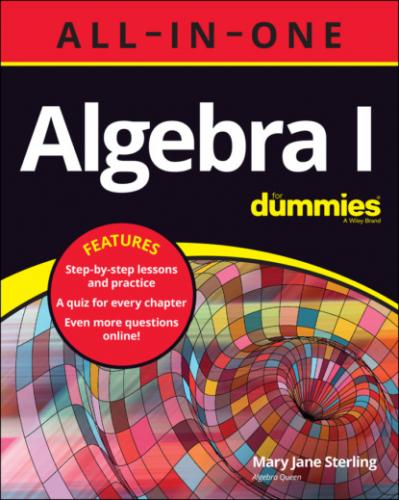But
Dividing fractions is as easy as (dividing) pie — that is, dividing the pie into enough pieces so that everybody at your table gets an equal share. Actually, dividing fractions uses the same techniques as multiplying fractions, except that there’s an additional “first step”: the numerator and the denominator of the second fraction first have to change places — the fraction does a “flip.”
When dividing fractions:
1 Change all mixed numbers to improper fractions.
2 Flip the second fraction, placing the bottom number on top and the top number on the bottom.
3 Change the division sign to multiplication.
4 Continue as with the multiplication of fractions.
The flip of a fraction is called its reciprocal. All real numbers except 0 have a reciprocal. The product of a number and its reciprocal is equal to 1.
Consider this example: If you buy
First, change the mixed number to an improper fraction. Then flip the second fraction, and change the division to multiplication:
Now reduce the fraction and multiply. Change the answer to a mixed number:
Having
A. You can make the problem easier if you reduce the fractions first. The 15 and 75 are both divisible by 15, the 21 and 49 are both divisible by 7, and the 16 and 24 are both divisible by 8:
Q. Divide:
A. First change the 2 to a fraction:
32
33
34
35
36
37
Simplifying Complex Fractions
A complex fraction is a fraction within a fraction. If a fraction has another fraction in its numerator or denominator (or both), it’s called complex. Fractions with this structure are awkward to deal with and need to be simplified. To simplify a complex fraction, you first work at creating improper fractions or integers in the numerator and denominator, independently, and then you divide the numerator by the denominator. You need to boil this down to one term in the numerator and one in the denominator.
A. First, change the mixed number in the numerator to an improper fraction. Then divide the two fractions by multiplying the numerator by the reciprocal of the denominator.
Q.
A. First, find a common denominator for the fractions in the numerator and a separate one for those in the denominator. Then subtract the fractions in the numerator and add the fractions in the denominator. Finally, divide the two fractions by multiplying the numerator by the reciprocal of the denominator.
38
39
40
41
Performing Operations with Decimals
Decimals are essentially fractions whose denominators are powers of 10. This property makes for much easier work when adding, subtracting, multiplying, or dividing.
When adding or subtracting decimal numbers, just line up the decimal points and fill in zeros, if necessary.
When multiplying decimals, just ignore the decimal points until you’re almost finished. Count the number of digits to the right of the decimal point in each multiplier, and the total number of digits is how many decimal places you should have in your answer.
Dividing has you place the decimal point first, not last. Make your divisor
